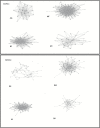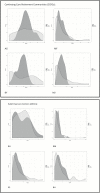From a Bird's Eye View: Whole Social Networks in Adult Day Care Centers and Continuing Care Retirement Communities
- PMID: 30480144
- PMCID: PMC6176959
- DOI: 10.1093/geroni/igy024
From a Bird's Eye View: Whole Social Networks in Adult Day Care Centers and Continuing Care Retirement Communities
Abstract
Background and objectives: The present study describes whole social networks in 4 adult day care centers (ADCCs) and 4 continuing care retirement communities (CCRCs) in Israel.
Method: Each respondent received a list of names of all individuals receiving services in the respective ADCC or CCRC and was asked to indicate whom he/she knows from the list. We derived whole social network properties and used hierarchical cluster analysis to group network settings. We further examined the ability of the social network data to classify respondents as members of either an ADCC or a CCRC.
Results: Many social network properties were more favorable in CCRCs than in ADCCs. A striking finding of the present study is that one can classify with a relatively high degree of accuracy a respondent as belonging to an ADCC or a CCRC, simply based on his or her social properties (specifically, number of people who know the participant and are known by the participant).
Implications: Despite some similarities between CCRCs and ADCCs, CCRCs likely allow for more inclusive and active social relations. This information should be valuable to administrators and care providers.
Keywords: Egocentric; Long-term care; Social network analysis; Sociocentric.
Figures



References
-
- Ayalon, L., & Green, O. (2015). A typology of new residents’ adjustment to continuing care retirement communities. The Gerontologist, 56, 641–650. - PubMed
LinkOut - more resources
Full Text Sources

